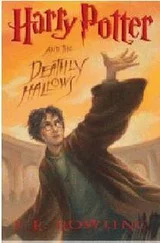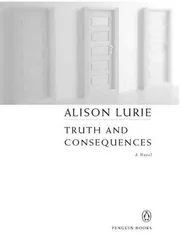Andersen was never a fool, and only occasionally a philosopher, but in a sense he remained a child all his life, with a child’s egotism and a child’s intense and volatile emotions. In the language of today’s psychology, he was acutely bipolar. He was often either wild with joy or in deep despair, wishing that he were dead. As he wrote at twenty-nine, “My pain is crushing when I suffer, but my joy when I’m happy is also inexpressible.” 4He also had a child’s naive but penetrating view of adult pretension and self-deception, like the little boy at the end of “The Emperor’s New Clothes,” who exclaims that the ruler has nothing on.
Also, like a child, Andersen saw everything in the world as alive and conscious. In his stories not only animals and birds, but also bugs and toys and flowers and even household objects have complex human personalities. In one of his tales a saucepan and a bunch of matches relate their life stories, and an earthenware pitcher proposes that they “have an intellectual entertainment.” 5In another tale a “decent, respectable Old Street Lamp” who is about to be retired reflects on her life. She “felt very much as a superannuated ballet-dancer feels when she is dancing for the last time, and knows that to-morrow and ever after she will sit alone in her attic chamber, morning, noon, and night, unthought of and uncared for by the generous public.” 6
For Andersen, like his Street Lamp, public attention was essential. When he was thirteen, a troupe of traveling actors came to town, and Andersen somehow convinced the manager of the theater to give him a walk-on part. To his mind, he was the center of the production. “I was always the first there, put on the red silk costume, spoke my line and believed that the whole audience thought only of me,” he wrote later. 7
From an early age Andersen sought out those who could help him toward the fame he craved. He wrote letters to well-known people and called on them, begging them to listen to him sing and recite poems and stories. Anyone who has ever been in a play or published a book will recognize the type—the awkward, odd-looking, self-conscious, very young man or woman who hangs about after the show or the reading, demanding attention, insisting on reciting a speech for you, singing a song, or showing you their half-baked, over-iced poems and stories. It is often clear from the manner of these people that they are convinced they are geniuses, and are in fact doing you a favor.
The surprising thing is that once in a while someone like this is in fact a genius. This was the case with Hans Christian Andersen; but for a long time no one agreed with him. From childhood on he was convinced of his own remarkable gifts, but by the age of thirty he had failed as a singer, a dancer, and an actor. He had managed to make a thin sort of living by writing poetry and accounts of his travels in Denmark, Germany, and Italy; his sentimental novel, Only a Fiddler , about a poor Italian boy who achieves fame as a singer was praised by some critics. If his life had ended then, no one would have remembered him. But instead, almost by accident, he discovered his true calling as a teller of fairy stories for children.
Today, this is a legitimate occupation: successful children’s writers are world famous and often very rich. But in Denmark in Andersen’s day, children’s literature was moralistic and drab, and fairy tales were published only by scholars. 8When Andersen wrote his first tales in 1835, he would probably have known the collections of Jacob and Wilhelm Grimm in Germany, and their Danish follower, Matthias Winther, whose Danish Folk Tales had appeared in 1823.
Unlike the Grimms and Winther, however, Andersen did not just write down the stories he had heard as a child from his mother and grandmother; he went on to compose new tales of his own. And even when he retold an existing story, he made dramatic changes. In “The Tinderbox,” for instance, the Princess marries the soldier at the end not because she loves him, but for practical reasons: her parents are dead, and “she liked [being queen] much better than living a prisoner in the copper palace.” 9
The heroes and heroines in the Grimms’ tales and other traditional collections usually meet their reward on earth: they kill the giant, rescue the prince or princess, win a kingdom, and live happily ever after. By contrast, many of Andersen’s stories end unhappily. In my collection of forty-eight of his best-known stories, twenty finish with a death, though sometimes the character who dies is rewarded by eternal life. After Andersen’s Little Match Girl perishes of the cold, for instance, the spirit of her grandmother carries her off to Paradise.
In a few of his best stories, however, Andersen provides a happy ending. Little Gerda, in “The Snow Queen,” rescues Kai from the icy palace of the enchantress, where his heart has been frozen solid and he spends all day trying to fit sharp flat pieces of ice together in what Andersen calls “the ice-puzzle of reason.” When Gerda, weeping, embraces him, the ice in his heart dissolves, and they fall into each other’s arms.
Yet mutual romantic love is very rare in Andersen’s tales. Again and again, his protagonists are rejected by those they court—and in this they share the unhappy experience of their author. All his life, Andersen continually fell in love with upper-class or titled persons, both male and female. Though he made many acquaintances, he had almost no romantic success: these people liked having him come to their houses, tell stories to their children, and sign books, but their attitude always remained one of friendly, slightly distant patronage. For years he tried, often in the most embarrassing manner, to get Edvard Collin, the handsome son of his first important patron in Copenhagen, to call him by the familiar pronoun “Du”; Edvard continued to refuse, remarking that though it was a trivial thing, he had “an innate dislike” of it, similar to the dislike a woman he knew felt for wrapping paper “so much that she was sick whenever she saw it. . . When someone whom I respect and like and have known a long time, asks me to say ‘Du,’ then this nasty and inexplicable feeling surfaces within me.” 10
Andersen never really recovered from this chilly rebuff, nor from the rejection he received from many other young, beautiful, and aristocratic people. Yet he continued setting his sights unreasonably high; sometimes it seems as if what he really wanted was a hopeless romantic love. Occasionally he altered facts to put a better spin on these events, declaring that he had never loved the person involved, or that circumstances, rather than their own feelings, had separated them. When he was twenty-five, he fell in love simultaneously with two siblings, Christian Voight and his sister Riborg, the children of a wealthy merchant. Riborg was already secretly engaged to a man her parents disapproved of, which may have been part of the attraction. After Riborg turned him down, he told friends that she didn’t mean anything to him, but he later wrote to Edvard with a more romantic version of the story:
. . . last summer I met a rich, lovely, spirited girl who feels the same for me as I do for her . . . certain circumstances made her marry a man who took her fortune. 11
The emphasis on wealth in this statement leaves rather a bad taste in the mouth, and suggests that Andersen may not have felt any more real passion for Riborg than she felt for him; “certain circumstances” was a euphemism for the fact that she was in love with the other man. When, toward the end of his life, Andersen did manage to establish a happy but short-lived sexual relationship, it was with a young man.
The heroes of Andersen’s tales are no more successful romantically than he was, and often for the same reasons: they aspire to union with persons or objects of a higher social class. The cardboard dancer in “The Steadfast Tin Soldier” pays no attention to the protagonist, and in “The Top and the Ball,” the Top’s proposal of marriage is scorned by the Ball, “who was made of morocco leather, and fancied herself a very fashionable young lady.” 12
Читать дальше











